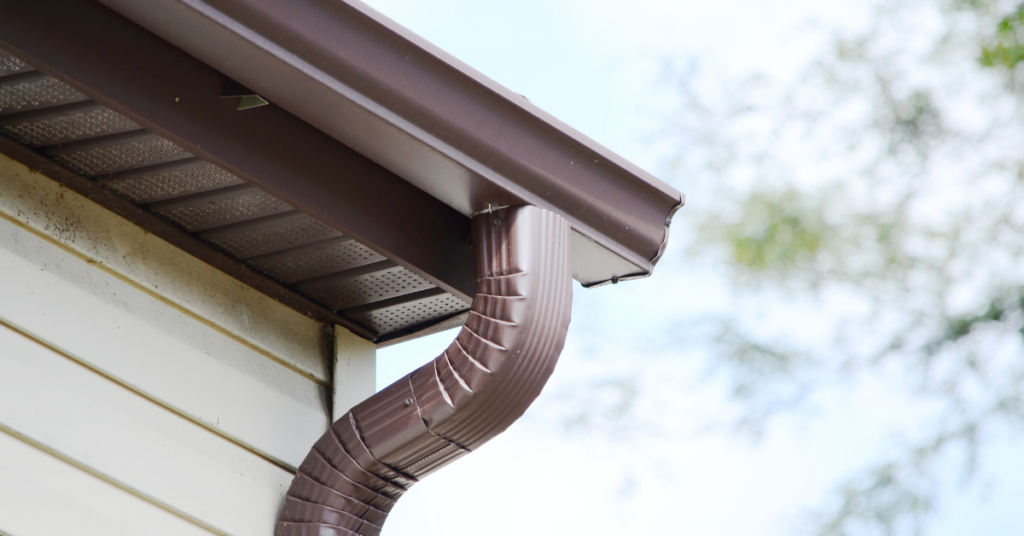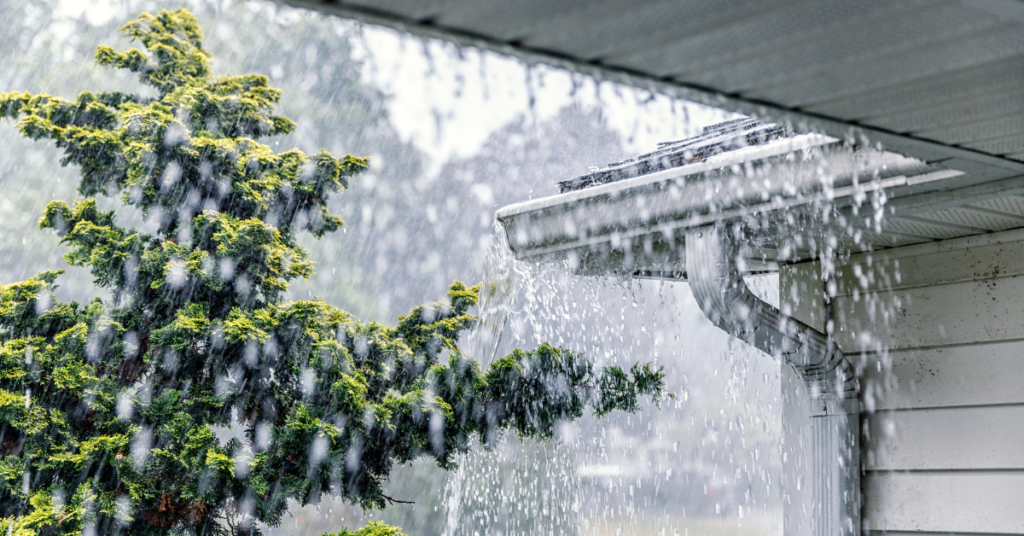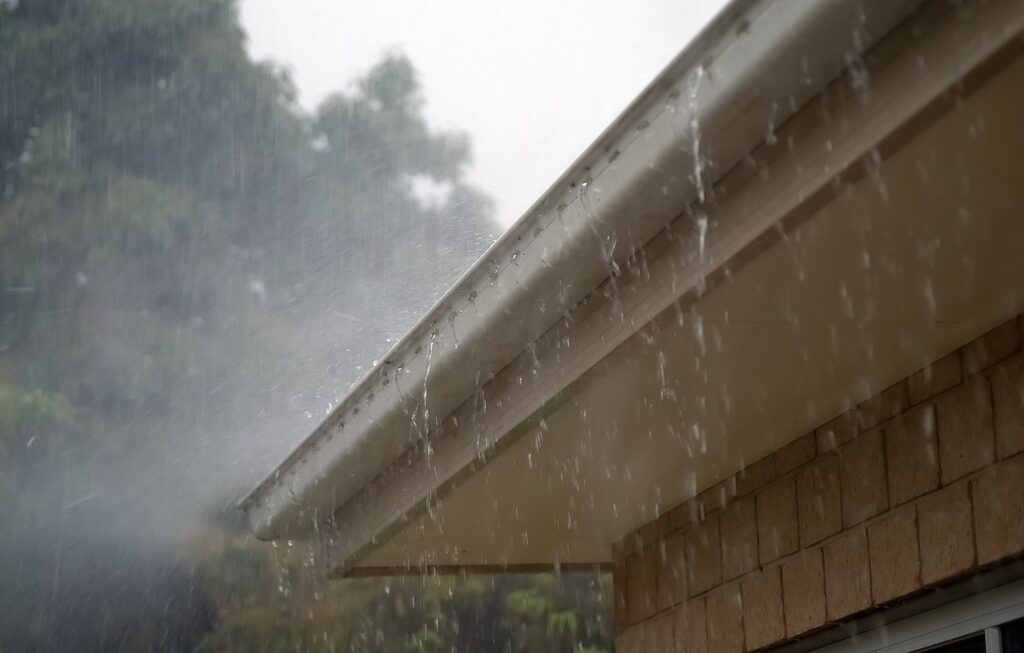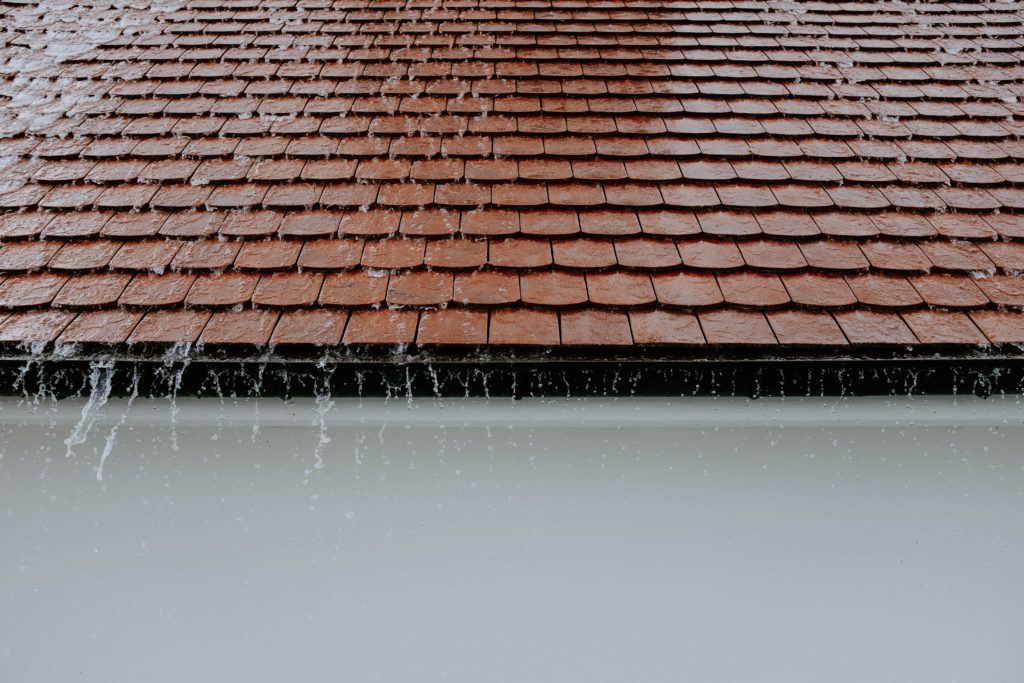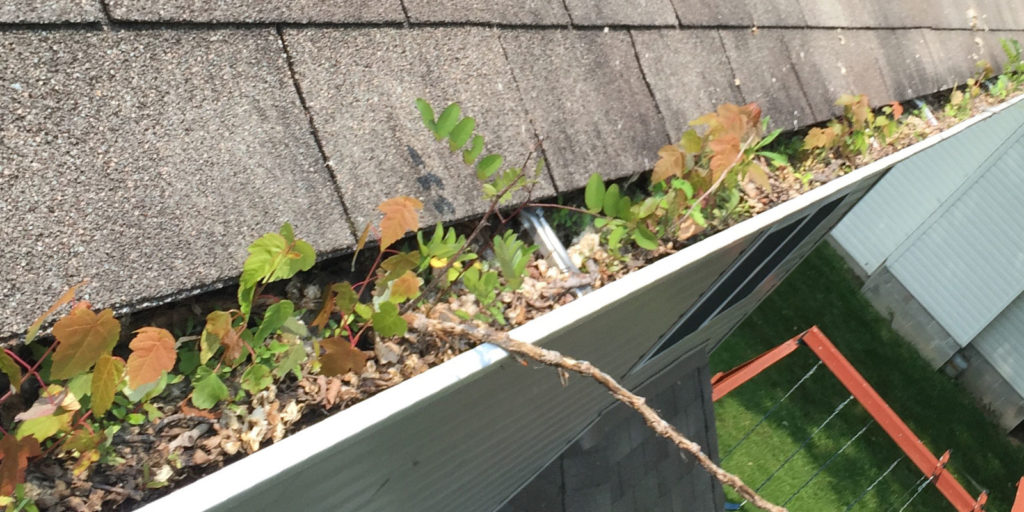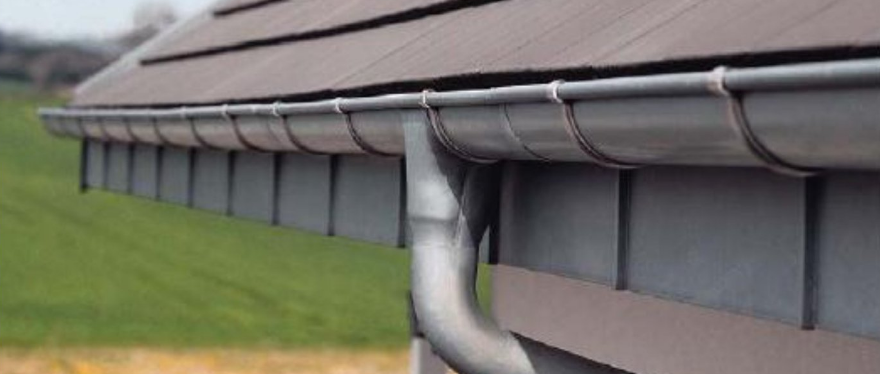October 11, 2024 in Gutters & Downspouts
Having Issues With Your Downspouts? Try These Troubleshooting Tips!
Tell us if this sounds familiar. You look out the window during a storm to find a waterfall coming from a six-foot long section of gutter. “That shouldn’t be happening,” you think to yourself before noticing—with a sigh—that there’s barely a trickle coming from the downspouts themselves.
What’s causing this? There are a few reasons your gutters could be having issues—wear and tear, poor installation, blockages, and more—let’s get into them so you can put a stop to the waterfalls coming from your gutters.
Common Downspout Problems
Clogged Gutters
Those waterfalls we mentioned are likely a result of one of the most common perpetrators of downspout issues: clogs. Leaves, twigs, and dirt can accumulate inside of them, creating a dam that lets little or no water through. When that happens, rainwater needs to find another way off your roof. When you don’t have control over where the water falls, it could pool near your foundation, resulting in costly repairs.
Improper Downspout Slope
When the slope of your downspout has shifted or is too shallow, water may not go in its intended direction. It can back up into the gutters, causing overflows and leaks. Additionally, improper installation or a shift in your home’s structure over time can impact the alignment of gutters and downspouts.
Leaks and Cracks
No matter how strong, every material will degrade over time. Due to exposure to the elements and the passage of time, downspouts can develop leaks and cracks. These openings, though small, can cause a significant amount of water to escape over time. Why is this such a bad thing, though? If it runs down the side of your home, water damage or unsightly stains on your siding could become a concern.
Disconnection from Gutter
Wear and tear, storm damage, and poor installation can lead to sections of your gutter system becoming loose or entirely disconnected. When this much water is escaping, the risk of flooding around your home increases. These disconnects are often easy to spot, but they sometimes require a closer look to identify the issue.
Quick Troubleshooting Tips
Clearing Debris
Here are a few steps you can take to remove that pesky debris from your gutters and downspouts. As always, please take the proper safety steps.
- Firmly plant a ladder to access the top of the downspout.
- While wearing gloves, use your hands to remove as much debris as possible.
- Use a hose to flush the remainder of the blockage. If that doesn’t work, use a plumber’s snake.
Checking for Proper Slope
We have a homework assignment for you (please try to contain your excitement): During the next rainfall, keep an eye on the flow of water within your gutters and downspouts. If the water isn’t draining properly, an adjustment may be in order. Reposition the brackets that hold the downspout in place, or add additional supports to mitigate shifting.
Repairing Leaks
Hopefully, any cracks or leaks you have will be small. If that’s the case, apply a waterproof sealant to the area affected. If the damaged area is large, we suggest replacing the affected piece entirely.
Reattaching Loose Downspouts
If you do come across a loose downspout, it’s best to clean both the downspout and the outlet of the gutter before attempting to reattach it. Using screws or gutter clips, attach it back in its intended position and ensure the connection is tight to avoid a repeat of the issue.
Preventative Maintenance Tips
Regular Cleaning Schedule
One great way to prevent clogs is to clean your gutters and downspouts on a regular basis—at least twice a year. While there will certainly be debris buildup between cleanings, it will likely not get bad enough to cause clogged gutters. Additionally, frequent easy cleanings are much more manageable than a full unclogging, where you’ll potentially discover further damage.
Installing Gutter Guards
Gutter guards are a great way to keep those pesky fall leaves out of the gutter system. They can extend the life of your downspouts by reducing the frequency of cleaning required and minimizing clogged gutters.
Checking for Damage After Storms
Sometimes, one of the most effective things you can do is simply use your eyes. When a storm has passed, give your whole gutter system a good look to make sure there’s been no damage or disconnects. Additionally, listen to the flow of water. If you hear a slight trickle rather than more substantial runoff that’s expected following a storm, there may be a blockage.
Conclusion
Taking care of any and all downspout issues as they pop up is an essential part of protecting your home from water-related damage. If you fail to do this, it could have costly consequences on your foundation and other major structural elements of your home. By following these tips, you can make sure your downspouts are in great working order year-round. If you come across a problem that’s too complex to take care of by yourself, don’t hesitate to rely on the professionals at PJ’s Roofing. We’re always happy to help.
So what are you waiting for? Give us a call so you can get your mind out of the gutter!

